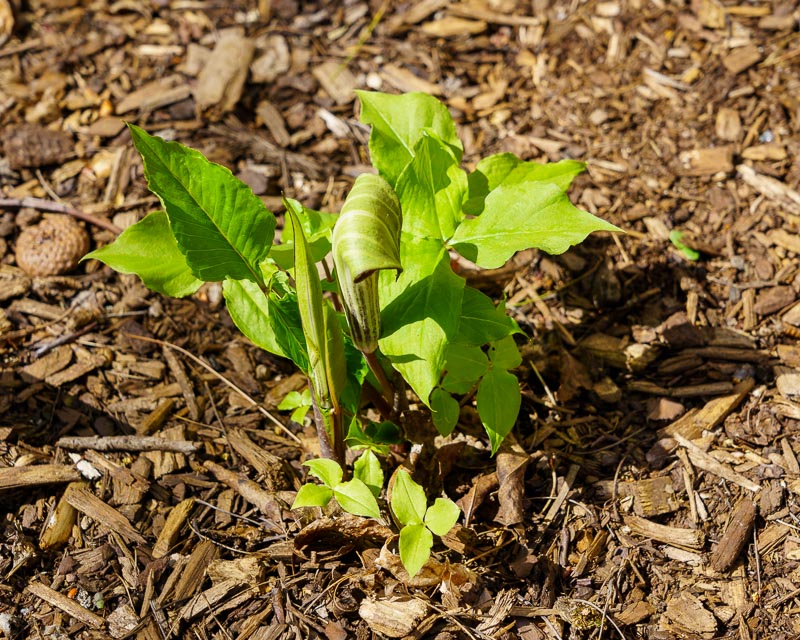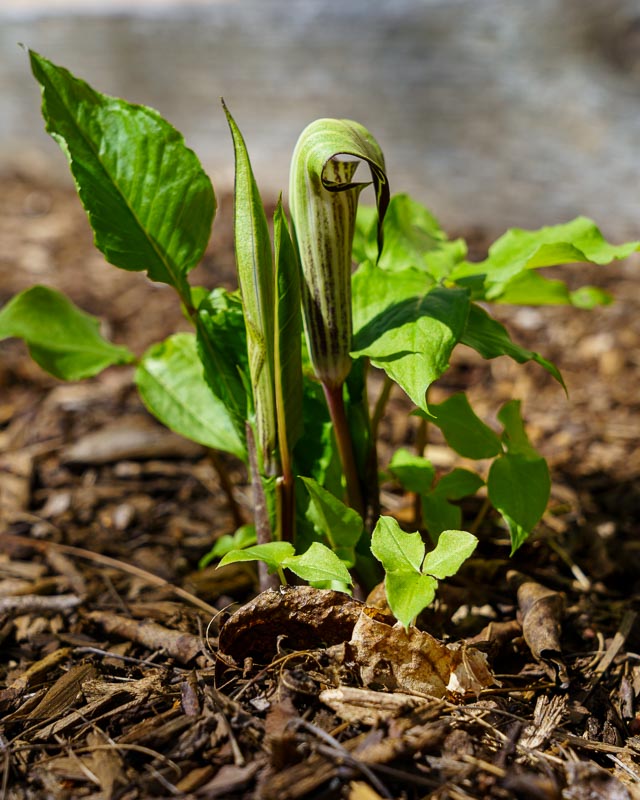Jack-in-the-pulpit
Common Name:
Jack-in-the-pulpit
Botanical Name:
Arisaema triphyllum
Mature Size:
12” – 24” tall; 12” – 24” wide
Sun Exposure:
Part Shade to Shade
Soil Type:
Moist, humusy
Soil pH:
Acidic
Bloom Time:
April to May
Flower Color:
Greenish-purple
Care:
Jack-in-the-pulpit needs shade, an adequate water supply, and nutrients. If these three elements are provided, the plant is largely carefree.
Soil:
These wildflowers do not demand the superb drainage that many plants do, making them an option for boggy soils. The idea is to mimic the native habitat, which is damp, acidic areas of the forest that are rich in organic matter.
Water:
Evenly moist soil is another must for growing Jack-in-the-pulpit.
Temperature and Humidity:
Jack-in-the-pulpit is reliably hardy in zones 4a to 9a, provided it gets the damp, humid conditions it craves. Try to provide the moist, boggy environment that gives the plant one of its common names—bog onion. During the growing season, it likes moderate conditions that avoid temperature extremes.
Fertilizer:
Fertilizing with compost is sufficient in most cases. But you can use an acidifying fertilizer if necessary to lower the pH of alkaline soils into the acidic range these plants favor.
Overwintering:
Don't feel compelled to clean up fallen leaves and plant debris from the area where Jack-in-the-pulpit is growing. This decaying material is essential to providing the plant with the nutrients and soil moisture it needs. Jack-in-the-pulpit is perfectly hardy in its established range (zones 4a to 9a) and requires no protection against winter cold.

